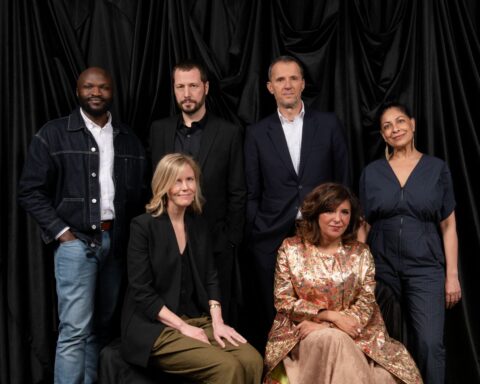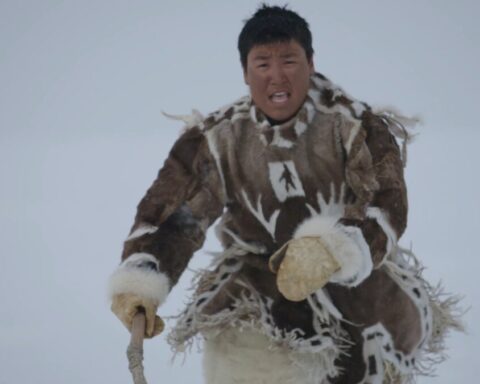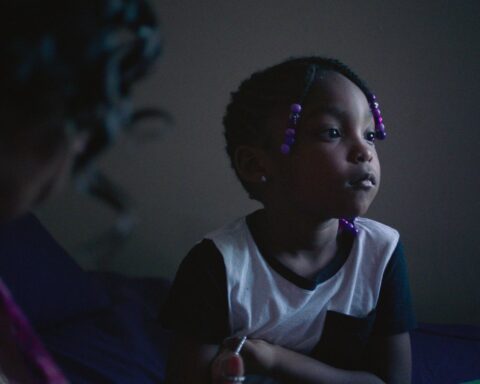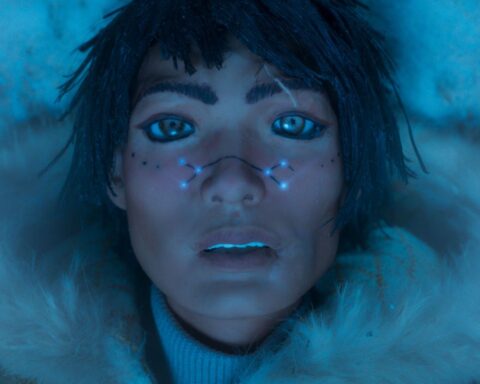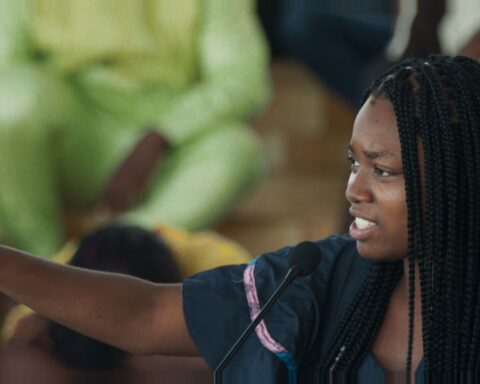Collectively they have sixty years of social political doc experience and more than a hundred international awards. Now Shelley Saywell and John Kastner are heating up the 2010 Hot Docs screening palette with haunting films about murder in the family.
Saywell’s In The Name Of The Family is a fierce yet tender exposé of honour killings, highlighting the attempted homicide of Fauzia Mohammad in New York, the murder of Aqsa Parvez in Toronto and the cold-blooded killings of sisters Sarah and Amina Said in Texas. Charged with the crimes are the young women’s brothers and fathers.
In Kastner’s beautifully executed Life With Murder, a Chatham, Ontario, couple’s smalltown life goes haywire when they are forced to deal with the death of their daughter, Jennifer Jenkins, and the slow-to-unravel realization that their son Mason is her killer. Even though Leslie and Brian Jenkins are devastated by Jennifer’s murder, they stand by Mason to keep the small semblance of family life they still have. Whether out of duty, loyalty or love, Kastner’s film raises many questions about Brian and Leslie’s life with their murderous son.
Murder Victims
Leslie Jenkins made a frantic 911 call moments after she and Brian entered their home at 5:00 p.m. on January 6, 1998, “There’s a body in the basement. We need help. There’s blood…She’s on the basement floor. There’s no life there at all…”
Jennifer was eighteen when she was murdered in her home. Photos and video reveal her as a fun, full-of-life girl with many interests and a fine relationship with her brother. Her parents and two aunts remember her as sweet and bubbly, a magnet for friends. They tear up when talking about her. Mason, who never tears, remembers his sister as someone who was going places—that is, until he killed her.
The only absolute for Jennifer’s parents after her murder was that she was gone. They had trouble believing Mason was involved. Mason’s trial and appeals lasted nine years and for all that time he held steadfast to his claim of innocence while they hung on to a thin thread of hope he wasn’t Jennifer’s killer.
With all appeals exhausted, Mason finally fesses up. As his alibi unravels, it becomes evident that Jennifer was killed because she was in the way. Mason had manifested a plot to kill his parents, inherit their money and start his bungled life of petty crime anew. The first victim was his sister but he never got to the second two, his parents, because they changed their plans from Leslie coming home alone to her arriving with Brian—and Mason was using a single-shot rifle that needed to be reloaded after each discharge. Even after he admits to his fouled murder and inheritance plan, his parents, astonishingly, have no concern for their safety.
Kastner spent ten years with the Jenkins to make his penetrating portrait of the broken family after Jennifer’s death. He captures great footage about their struggle to regain normalcy, and insightful pieces of the puzzle about Mason’s motive. When all is told, the crime is far grimmer than just killing his sister. Leslie and Brian have resigned to their life with Mason as it has become: phone calls and family weekends at Warkworth Institution. Mason could get out as early as 2014, but is more likely to serve his full sentence until 2023. It would be interesting to see what shape his family takes when he’s free rather than in jail.
On December 10, 2007, Aqsa Parvez’s father picked up the phone to make a brief and chilling 911 report: “I’ve killed my daughter.”
Three weeks later, on January 1, 2008, Sarah Said made a desperate 911 plea and was put on hold as the fire department was contacted: “Help me. Oh, my God, I’m dying. My dad shot me and my sister. I’m dying. I’m dying.” When the fire department (finally) comes on the line and tries to get her address only faint moans are heard. Clearly heard on the tape is someone returning to the car to shoot her again while she was on hold, apparently without the 911 operator hearing. Sarah suffered nine gunshot wounds, her sister Amina two.
Saywell brings extremely beautiful, bright and vivacious Aqsa Parvez to life through testimonies from high school friends and photos on Facebook that portray her as a popular girl. Her dream was to be a fashion designer. We also hear about her turbulent family life: suspicious parents who spied on her at school to see what she was wearing, tattletale siblings who reported when she didn’t wear her hijab (the traditional Muslim head covering), a brother who became violent toward her and mounting threats by her father that he was going to kill her if she disobeyed him.
Leading up to her murder, the 16-year-old Toronto student feared her father enough to share her problems with authorities at school and move away from her family to stay with a friend. She’d celebrated a birthday at her friend’s house the night before she died, where photos were taken of her dancing and having fun. On the day she was killed, Aqsa and her friend were travelling to school when her brother, Waqas Parvez, showed up to take her home under the guise of getting clothes. She told her friend to go on to school. It was the last time she’d see her. Aqsa was strangled at home and moved to critical care in two hospitals before she died.
The root of the family conflict, and alleged reason behind her death, was her refusal to wear the hijab. Aqsa’s father Muhammad and brother Waqas are charged with first-degree murder for the “deliberate and preplanned” killing of Aqsa Parvez.
In Dallas, Texas, 18-year-old Amina Said read about Aqsa’s murder and wanted to write a report about it for school, but she never got the chance. She and her 17-year-old sister Sarah were natural beauties born a year apart and described as inseparable during their entire short lives. They were top students with goals to be doctors. Raised in a Muslim/Christian household with older brother Islam, their father Yaser controlled the family and spied on the girls—shown in creepy surveillance videos he made, and kept, that are spine-chilling, knowing he killed them. Although charges were reneged, he was also accused of sexual activity with his daughters when they were seven and eight.
The teenage girls were dating non-Muslim boys when mounting fears of their father increased to such a level that they fled their home with their mother. However, and most unfortunately, they all returned. Even worse, their mother, unbelievably, let them go off alone with their father to get take-out food. They never returned.
After Said allegedly shot both his daughters in the back of his taxi, he disappeared. The FBI has classified the crimes as “honour killings” and issued a nationwide manhunt for Yaser Abdel Said, who to this day remains at large.
Brothers and Sisters
Kastner crafts a structure that outwits Mason’s caginess, revealing powerful moments that show how the terrible murder of his sister happened.
Jennifer Jenkins is in her favourite chair doing her favourite activity, eating popcorn and watching soaps on TV, when all routine subsides and a bullet hits her. Mason doesn’t stop there; he fires four more times, hitting her twice in the chest and three times in the head. And after each shot he must stop and reload his gun. When he is done, he drags his sister’s body down several steps to conceal her from his mother, who he expects to be killing next. Then his plan has to change because Leslie isn’t coming home alone as expected. So he flees, leaving his dead sister for his parents to find while he scrambles to make up a story to avoid taking responsibility.
Mason fabricated an unbelievable tale about multiple shooters killing Jennifer and kidnapping him. He firmly claimed his innocence for nine years, until all appeals were exhausted, and only then did he confess he killed her. He then says the first shot was an accident and there were no vital signs after that so he shot her multiple times to make it look like other people did it. But later he changes his story saying Jennifer was making sounds like a wounded animal after that shot and he had to shoot her again to stop her pain. Never does he say, “Oh my God, I shot my sister.”
Mason had just come out of jail on Christmas day, less than two weeks before the crime. His troubled world was different from that of his family. His thoughts about killing them were secret and grim. His actions to get a rifle, use it, and shirk responsibility for nine long years are signs he lacks a moral conscience. Mason has lived with his sister’s murder for more than a dozen years and if he has received therapy, none is shown in the film. The thing he seems most bothered by is his jail time.
Sarah and Amina’s 19-year-old brother Islam Said is introduced in Saywell’s film as a youngster but he doesn’t appear after the murders. His brief presence and alignment with his father’s control over his sisters leaves a haunting question mark about his potential role in their fate.
Islam went to a candle vigil for the girls but he’s not shown in footage there, so it’s hard to gauge his emotions. It turns out he hadn’t attended school since the age of 14, whereas both his sisters were honour students. A TV report on the internet states he visited his father’s brother in New York State three times after his sisters’ murders, and in an archival clip, he makes a halfhearted plea for his father to turn himself in. In the event there is more to Islam’s story Saywell tried to talk to him, but he has relocated to Egypt, one of the suspected locations where his father may be in hiding.
Aqsa’s brother Waqas Parvez delivered her home the day she was killed. Until the trial it won’t be known if he participated further. The trial is postponed until 2011.
When Fauzia is introduced late in Saywell’s film, one wonders how a new character can add anything to the emotional climax of Aqsa and the Said girls, but when Fauzia is intercut with her brother Waheed Mohammad, who is in prison for attempting to kill her, it becomes explicitly clear.
Waheed attacked his 19-year-old sister, Fauzia, with a knife, stabbing her 11 times and leaving her in critical condition because she wasn’t listening to him, “like a good Muslim girl.” Instead she was getting an education, seeking a career and moving from her family without permission. Like Jennifer Jenkins, Aqsa Parvez, and Sarah and Amina Said, Fauzia was going places, especially when compared to what little is known about their brothers—Mason Jenkins led a life of petty crime and Waheed describes himself as cutting onions to get money for his family. With five gunshot wounds administered to Jennifer Jenkins and 11 stab wounds to Fauzia Mohammad, it seems their brothers were venting sibling jealousy, or even worse, taking out a general hatred of women on their own sisters.
Mothers and Fathers
The safest sanctuary is the home, in the closeness of family, with parents that protect their children. But in both these films, homes become the unsafe place, families create the biggest danger, and parents are absent, deluded, or implicated in the crimes.
Leslie and Brian Jenkins describe themselves as normal folks, both professionals, with a good family, although Mason had trouble with the law from the age of 12. They would have no reason to suspect what happened in their home, yet they have questioned their role as parents and come up with nothing they could have done differently to prevent Jennifer’s murder.
The murder not only changed their family and their lives, it changed them as people. Leslie is the logical one, Brian emotional, and the split is well defined. His change is the most drastic; he’s lost a hundred pounds, and is chronically sick and weak. He suffers deeply in the aftermath of losing one child to murder and being a loyal father to the child who killed.
Leslie shows strength but still has questions. She made the 911 call and ponders why Mason never did. Brian and Leslie were thrown into the cleanup, police interrogations, Mason’s trial, appeals and jail time. They live in a house that went from four to two instantaneously. They’ve had to grapple with the seeds of Mason’s story as it has come out and the knowledge that he wrote a fake will to leave everything to him if his plan to kill them had worked. They’ve learned that Mason lied for years about his innocence, and, according to him, the entire story has not even come out yet, which is something Leslie would like him to finish. She says it has been a life sentence for them too, that people treat them differently and isolate them in the community. They might not have been able to prevent their daughter’s murder and yet they bear much of the brunt from it. And while it’s commendable that they stand by Mason, it doesn’t necessarily make it wise.
Along with the stories of Aqsa, Sarah, Amina and Fauzia, Saywell includes two Toronto teens struggling to prevent similar fates: Jawairia, who ran away from her home at 15, and Anila, who leaves her family at 18. The only mother of all these young women to grace the film is Patricia Said. Her husband, Yaser, was a taxi driver and he used his cab to spy on Sarah and Amina, to see what they wore and who they were with. Every father in Saywell’s film is described as a taxi driver, and they all used their cabs to spy on their daughters. Along with spying, Yaser made a collection of disturbing videos to keep an eye on his daughters walking home from school, at sports practice after school and working at a convenience store job.
Patricia describes Yaser as controlling, and all other fathers are described the same way. Along with the sexual-abuse allegation, an aunt tells of Yaser’s brutal violence, like Amina being kicked in the face by him so hard that her braces lodged in her skin. Patricia says he wouldn’t let her go to a doctor; he wanted her injury dealt with at home to protect him from being charged. Experiencing violence in the home was common for all six young women in Saywell’s film. Aqsa was beaten by her brother, Fauzia was beaten by her brother and mother, Jawairia and Anila were beaten repeatedly by their fathers, and Sarah and Amina were beaten and abused by their father. Their homes were unsafe places for these young women.
A publication ban prevents details leaking to know if Aqsa’s mother was at home when she was strangled or if anyone else in the crowded household knew what was going on.
As Fauzia’s brother was stabbing her, her mother yelled, “Look what you’re doing to yourself”—blaming her daughter instead of her son’s actions. Her mother did not stop her brother.
Patricia Said admits to knowing Yaser always carried a gun, a fact she stresses. She knew how much he had terrorized the girls most of their lives. She knew there was real reason to fear his harming their daughters because of who they were dating. So why didn’t she place herself in the car with them? It’s a gaping question that remains unanswered.
None of the girls could go home for help because violence and death threats existed there. None of them could go to their parents because they were the root of their terror. Not one mother protected her daughter from harm when the threats at home from brothers and fathers escalated first to beatings and then to death threats that were eventually enacted.
Remorse and Forgiveness
Five girls between the ages of 16 and 19 are killed or almost killed by brothers and fathers in these two harrowing films. One perpetrator is on the run, two await trial and two are in prison. The ones behind bars are focused on minimizing their guilt
Mason lied to his parents and investigators, and tied up every level of court appeal to falsely claim his innocence, wasting many resources. He offers no apologies.
He says he won’t have Jennifer to help him when his parents are gone, that he’ll have no one, and that it’s a tough pill to swallow—but he brought on his own plight. He shows no remorse about Jennifer and doesn’t ask his parents for forgiveness. Kastner punctuates doubt about Mason’s reform by ending on a photograph of him with a sly, psychotic stare.
Aqsa’s father was angry that he couldn’t control her wearing her hijab. Fauzia’s brother was angry that he couldn’t control her thirst for education and career. Sarah and Amina’s father was angry that he couldn’t control who his daughters dated.
The term “honour killing” is an oxymoron. The murders of Aqsa, Sarah and Amina happened due to a feeling of dishonour that fathers hoarded until exploding and murdering. All four perpetrators in Saywell’s film are Muslim. In some countries, “honour killings” are sanctioned, but not in Canada or the U.S.
Taking the law into one’s own hands is against Islamic teachings. In the Islam faith, killing is as much a sin as it is in all major religions. According to the Qu’ran, killing a person unjustly is like killing all of humanity. While fathers were deeply concerned about their daughters not upholding their faith, it seems they were willing to break from their faith to deal with the problem. This indicates that the problem is deeper than faith, and has much more to do with anger and control.
In Saywell’s film, no remorse is shown and no one seeks forgiveness. Fauzia’s brother Waheed reveals skewed values when he says about Fauzia, “She ruined our lives, she ruined my life, my family. If she had listened to me I wouldn’t be here [in prison].” The United Nations estimates there are 5,000 “honour killings” a year. Saywell’s timely film puts a human face to the staggering crisis.
In The Name Of The Family and Life With Murder are tragic and terrifying films by John Kastner and Shelley Saywell. Anyone wanting an insider’s view of murder in the family won’t want to miss these two deeply moving documentaries.




